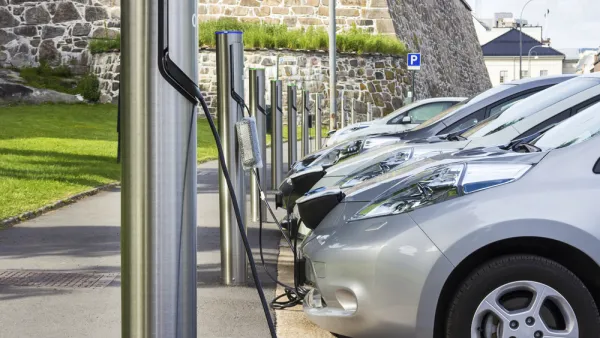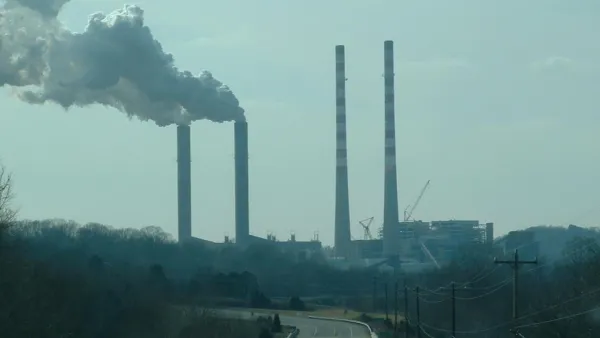Last week I attended the NREL Energy Analysis Forum, where leading North American energy analysts discussed current thinking concerning greenhouse gas emission reduction strategies, much of which involves emission cap and trade programs (as summarized in the report by Resources for the Future, "Key Congressional Climate Change Legislation Compared"). Similarly, a recent report, "Reducing U.S. Greenhouse Gas Emissions: How Much At What Cost" evaluates emission reduction strategies according to their cost effectiveness.
Last week I attended the NREL Energy Analysis Forum, where leading North American energy analysts discussed current thinking concerning greenhouse gas emission reduction strategies, much of which involves emission cap and trade programs (as summarized in the report by Resources for the Future, "Key Congressional Climate Change Legislation Compared"). Similarly, a recent report, "Reducing U.S. Greenhouse Gas Emissions: How Much At What Cost" evaluates emission reduction strategies according to their cost effectiveness.
Virtually all this analysis is biased against mobility management (strategies that increase transport system efficiency by improving accessibility options and applying more efficient incentives), for the following reasons:
* Co-benefits are ignored. Current analysis gives little consideration to benefits such congestion reduction, road and parking facility cost savings, consumer savings, reduced traffic accidents, and improved mobility for non-drivers, although these benefits are often larger in total value than emission reduction benefits. When all impacts are considered, mobility management strategies are often among the most cost effective GHG emission reduction strategies, because they are justified on economic grounds and so provide "free" environmental benefits.
* Current analysis generally ignores the additional external costs that result when increased vehicle fuel efficiency and subsidized alternative fuels stimulates additional vehicle travel, called a "rebound effect."
* Mobility management emission reductions are considered difficult to predict. Although case studies and models are available for many of these strategies, this information is not widely applied to energy planning.
* Mobility management programs are considered difficult to implement. Such programs often involve multiple stakeholders, such as regional and local governments, employers and developers, and various special interest groups. As a result, they tend to seem difficult and risky compared with other emission reduction strategies that only require changes to utility operations, fuel production or vehicle designs.
* Analysis often assumes that vehicle travel reductions harm consumers and the economy. In fact, many mobility management strategies benefit consumers directly and increase economic productivity. Our research, summarized in the report "Socially Optimal Transport Prices and Marekts" indicates that with more optimal pricing and planning practices, travelers would choose to drive less, use alternative modes more, and be better off overall as a result.
Described differently, there are two general approaches to reducing transportation emissions: reduce emission rates per vehicle-kilometer or reduce total vehicle-travel. The first often seems easier, but if done correctly, the second provides far more benefits and so is often best overall.
Currently proposed emission reduction programs (particularly those that rely on cap-and-trade) will not implement mobility management as much as optimal, and will miss an opportunity to help address other planning objectives, such as congestion reductions, crash reductions, consumer savings and improved mobility for non-drivers. It is up to people who understand the wider value of mobility management to educate energy analysts about these issues, so mobility management can receive the support justified.

National Parks Layoffs Will Cause Communities to Lose Billions
Thousands of essential park workers were laid off this week, just before the busy spring break season.

Retro-silient?: America’s First “Eco-burb,” The Woodlands Turns 50
A master-planned community north of Houston offers lessons on green infrastructure and resilient design, but falls short of its founder’s lofty affordability and walkability goals.

Delivering for America Plan Will Downgrade Mail Service in at Least 49.5 Percent of Zip Codes
Republican and Democrat lawmakers criticize the plan for its disproportionate negative impact on rural communities.

Test News Post 1
This is a summary

Test News Headline 46
Test for the image on the front page.

Balancing Bombs and Butterflies: How the National Guard Protects a Rare Species
The National Guard at Fort Indiantown Gap uses GIS technology and land management strategies to balance military training with conservation efforts, ensuring the survival of the rare eastern regal fritillary butterfly.
Urban Design for Planners 1: Software Tools
This six-course series explores essential urban design concepts using open source software and equips planners with the tools they need to participate fully in the urban design process.
Planning for Universal Design
Learn the tools for implementing Universal Design in planning regulations.
EMC Planning Group, Inc.
Planetizen
Planetizen
Mpact (formerly Rail~Volution)
Great Falls Development Authority, Inc.
HUDs Office of Policy Development and Research
NYU Wagner Graduate School of Public Service





























